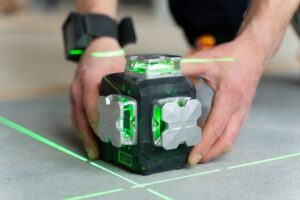
The Swiffer Wet Jet is a popular cleaning tool that has revolutionized household cleaning with its ease of use and effectiveness. However, one of the key components that keeps the Swiffer Wet Jet running smoothly is often overlooked: the batteries. In this comprehensive guide, we’ll delve into everything you need to know about Swiffer Wet Jet batteries, from installation and maintenance to troubleshooting common issues. We’ll also explore why the right batteries are crucial for optimal performance and how to get the most out of your Swiffer Wet Jet.
What Are Swiffer Wet Jet Batteries?
Swiffer Wet Jet batteries are the power source for the Swiffer Wet Jet, a battery-operated floor mop that sprays cleaning solution directly onto the floor. The Swiffer Wet Jet typically requires four AA batteries to operate. These batteries power the spray mechanism, allowing you to dispense cleaning solution with the push of a button.
Why Swiffer Wet Jet Batteries Matter
Choosing the right batteries for your Swiffer Wet Jet is crucial for several reasons:
- Performance: High-quality batteries ensure that the spray mechanism works efficiently, providing a consistent flow of cleaning solution.
- Longevity: Using the right batteries can extend the life of your Swiffer Wet Jet, reducing the need for frequent replacements.
- Cost-Effectiveness: Investing in durable batteries can save money in the long run by reducing the frequency of battery changes.
Types of Swiffer Wet Jet Batteries
There are various types of batteries you can use in your Swiffer Wet Jet. Here’s a breakdown of the most common ones:
Alkaline Batteries
Alkaline batteries are the most common type used in household devices, including the Swiffer Wet Jet. They are affordable, widely available, and provide reliable performance.
Pros:
- Affordable
- Readily available
- Reliable performance
Cons:
- Shorter lifespan compared to other types
- Not environmentally friendly
Rechargeable Batteries
Rechargeable batteries, such as NiMH (Nickel-Metal Hydride), are an eco-friendly option for your Swiffer Wet Jet. Although they have a higher upfront cost, they can be recharged multiple times, making them a cost-effective choice in the long run.
Pros:
- Eco-friendly
- Cost-effective over time
- Long lifespan
Cons:
- Higher initial cost
- Requires a charger
How to Install Swiffer Wet Jet Batteries
Installing Swiffer Wet Jet batteries is a straightforward process. Here’s a step-by-step guide:
- Locate the Battery Compartment: The battery compartment is usually located on the back of the Swiffer Wet Jet handle.
- Open the Compartment: Use a screwdriver or your fingers to open the battery compartment cover.
- Insert the Batteries: Place the batteries into the compartment, ensuring the positive and negative ends are aligned correctly.
- Close the Compartment: Secure the battery compartment cover back into place.
Tips for Maintaining Swiffer Wet Jet Batteries

To get the most out of your Swiffer Wet Jet batteries, follow these maintenance tips:
- Regular Checks: Periodically check the battery compartment for corrosion or leakage. Clean it with a dry cloth if necessary.
- Remove Batteries When Not in Use: If you’re not using your Swiffer Wet Jet for an extended period, remove the batteries to prevent leakage.
- Use Fresh Batteries: Always use fresh, high-quality batteries to ensure optimal performance.
Troubleshooting Common Issues with Swiffer Wet Jet Batteries
Despite their reliability, you might occasionally encounter issues with your Swiffer Wet Jet batteries. Here are some common problems and how to solve them:
The Swiffer Wet Jet Won’t Turn On
Possible Causes:
- Dead batteries
- Improper battery installation
Solutions:
- Replace the batteries with fresh ones.
- Check the battery installation and ensure the batteries are inserted correctly.
The Spray Mechanism Is Weak
Possible Causes:
- Low battery power
- Clogged spray nozzle
Solutions:
- Replace the batteries with new ones.
- Clean the spray nozzle to remove any blockages.
The Batteries Are Leaking
Possible Causes:
- Old or damaged batteries
Solutions:
- Remove the leaking batteries immediately.
- Clean the battery compartment and replace with fresh batteries.
Best Practices for Battery Disposal
Proper disposal of Swiffer Wet Jet batteries is essential for environmental protection. Follow these guidelines for battery disposal:
- Recycle: Take your used batteries to a local recycling center or a battery recycling program.
- Avoid Landfills: Never dispose of batteries in the regular trash, as they contain harmful chemicals that can leak into the environment.
- Check Local Regulations: Follow your local regulations for battery disposal to ensure compliance with environmental laws.
Extending the Life of Your Swiffer Wet Jet Batteries

Here are some tips to extend the life of your Swiffer Wet Jet batteries:
- Store Batteries Properly: Store batteries in a cool, dry place to prevent them from draining quickly.
- Avoid Mixing Old and New Batteries: Mixing old and new batteries can cause the new batteries to drain faster.
- Use High-Quality Batteries: Invest in high-quality batteries for better performance and longevity.
Frequently Asked Questions About Swiffer Wet Jet Batteries
Q: How often should I replace the batteries in my Swiffer Wet Jet? A: The frequency of battery replacement depends on usage. Heavy users may need to replace batteries every few weeks, while occasional users might only need to change them every few months.
Q: Can I use rechargeable batteries in my Swiffer Wet Jet? A: Yes, rechargeable batteries such as NiMH can be used in the Swiffer Wet Jet. They are a cost-effective and eco-friendly option.
Q: What should I do if my Swiffer Wet Jet batteries are corroded? A: Remove the corroded batteries immediately and clean the battery compartment with a dry cloth. Replace with fresh batteries.
Conclusion
Swiffer Wet Jet batteries are a crucial component for the optimal performance of your Swiffer Wet Jet. By understanding the different types of batteries, how to install and maintain them, and how to troubleshoot common issues, you can ensure that your Swiffer Wet Jet remains a reliable and efficient cleaning tool. Remember to use high-quality batteries and follow proper disposal practices to protect the environment. With these tips, you’ll get the most out of your Swiffer Wet Jet and keep your home sparkling clean.
By following the advice in this guide, you’ll be well-equipped to handle any issues that arise with your Swiffer Wet Jet batteries, ensuring that your cleaning sessions are always smooth and effective.

